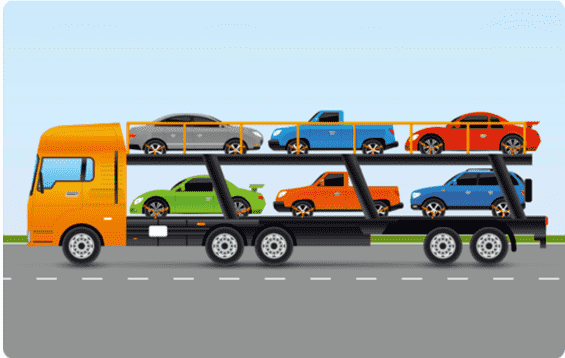Car lashing is a method used primarily to secure vehicles during transportation to prevent any movement that could lead to damage. Whether it’s for a single car being towed, multiple vehicles on a transporter, or precious cargo in maritime shipping, car lashing is vital for safe and secure transit.
Key Components of Car Lashing
The lashing system includes straps, a ratchet tensioning device, and sometimes additional protective elements like corner protectors, which help avoid damage to the vehicle. The ratchet tensioning device is a crucial component, which allows a person to tighten the strap with the necessary force to hold the car in place reliably. Because of its design, the ratchet ensures that once the strap has been pulled tight, it will not loosen until it is released using the ratchet mechanism. This feature is particularly important because it maintains the tension in the strap throughout the transportation process regardless of the vibrations or movements that occur.
The straps are typically made from high-strength materials able to withstand significant force without snapping. They have to be tough enough to hold down vehicles that weigh several tons, yet they must not compromise the vehicle’s structure or finishing.
Purpose of Car Lashing
The primary purpose of car lashing is to securely and rigidly hold down vehicles during transportation to prevent any movement that could cause damage or become a safety hazard. Effective car lashing protects not only the cargo itself but also the vessel, transport equipment, and the personnel handling the transport. It is especially important for new vehicles being transferred from manufacturers to dealerships that require extra care to avoid scratches, dents, or other damages.
Car lashing is a critical consideration in logistics and cargo management. Professionals trained in proper car lashing techniques can ensure that vehicles arrive at their destinations in the same condition as they left, avoiding the costs and customer dissatisfaction associated with transportation damage.
Whether by road, rail, or sea, car lashing provides peace of mind that the vehicles being transported are secure and protected until they reach their final stop. It is an essential element of the transportation process that helps to ensure safe and efficient delivery. So, it is crucial for anyone involved in vehicle transport to understand the importance of car lashing and use proper techniques and equipment to secure vehicles during transit. Additionally, regular inspections and maintenance of car lashing equipment can help prevent accidents and maintain the integrity of the straps and tensioning devices. The proper use of car lashing not only protects the vehicles and personnel involved but also helps to maintain the overall safety and efficiency of transportation operations. As technology advances, so does the equipment used for car lashing, making it easier and more efficient to secure vehicles during transit. By staying updated on these advancements, professionals in the logistics industry can continually improve their car lashing techniques and provide the best possible protection for transported vehicles. In conclusion, car lashing is a crucial aspect of vehicle transportation that ensures safe and secure delivery while also protecting valuable assets. It is an essential skill for anyone involved in logistics or cargo management, and constant improvements in techniques and equipment make it an ever-evolving process. Proper understanding and use of car lashing techniques can help prevent accidents, reduce costs, and ensure customer satisfaction. So, it is crucial to stay informed about the latest developments in car lashing and continuously improve its implementation for safe and efficient vehicle transportation.
Additional Factors to Consider
While car lashing is primarily used for securing vehicles during transportation, there are other factors to consider when choosing this method. For example, the type of vehicle being transported, the mode of transportation, and the distance of travel can all impact the car lashing techniques used. Different vehicles may require different types of straps or additional protective measures to prevent damage during transit. The mode of transportation also plays a significant role as road, rail, and sea transport have their unique challenges and regulations when it comes to car lashing. Furthermore, the distance of travel can also affect the duration and effectiveness of car lashing, as longer trips may require additional inspections and adjustments to ensure the straps remain secure throughout the journey.
Moreover, weather conditions and external factors such as turbulence or rough roads can also impact the need for proper car lashing techniques. It is essential to consider all these factors and make necessary adjustments to ensure the safe and secure transportation of vehicles.
Conclusion
In summary, car lashing is a crucial aspect of vehicle transportation that helps prevent damage and ensure the safety of both cargo and personnel. It involves using specialized equipment and techniques to securely fasten vehicles during transit, thus maintaining their structural integrity and protecting them from external factors. Professionals in logistics and cargo management must understand the importance of car lashing and continuously improve their techniques to adapt to changing technologies and transportation methods. By doing so, they can ensure safe and efficient delivery while also maintaining customer satisfaction. So, whether you are transporting new vehicles from manufacturers to dealerships, make sure to use proper car lashing techniques for a successful outcome.

